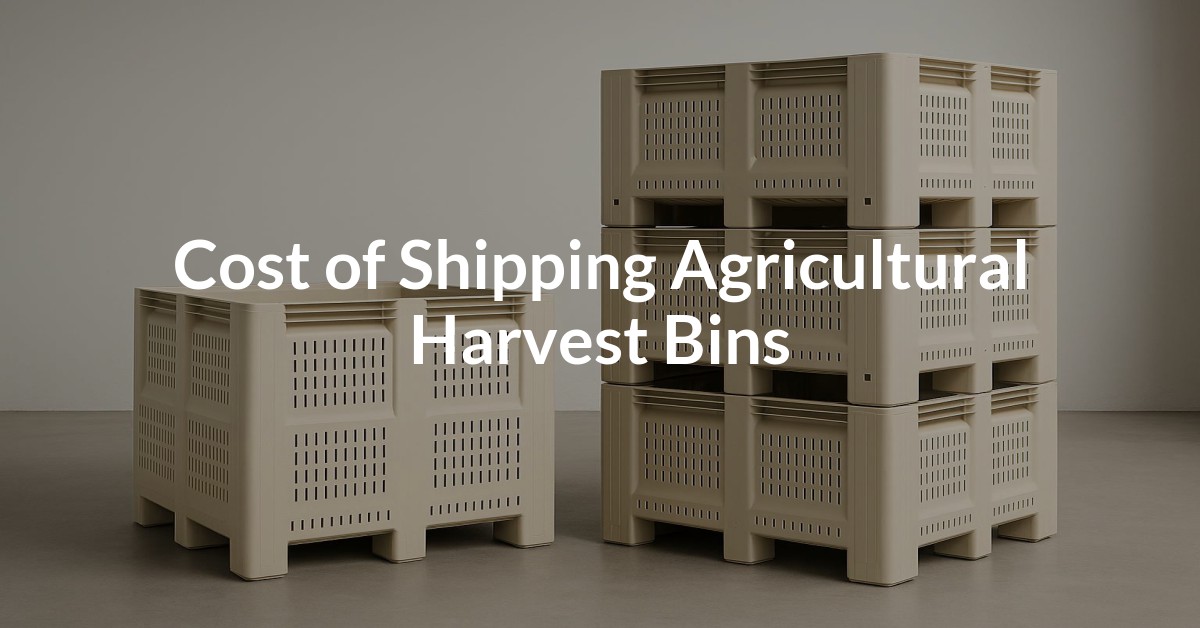Intermediate Bulk Containers (IBC Totes) are a popular choice for transporting liquids, pastes, or granulated substances in bulk. These containers play a vital role in various industries, including agriculture, manufacturing, and chemicals. Ensuring safe and efficient shipment of IBC Totes requires understanding their dimensions, freight class, and the right shipping options.
Understanding Freight Class for IBC Totes
Freight class is a critical factor in shipping costs, especially for items like IBC Totes, which vary in size and weight. The National Motor Freight Classification (NMFC) system is used to assign a class to commodities transported via LTL shipments. IBC Totes generally fall into the freight class range of 55 to 70, depending on their density, stowing characteristics, and handling requirements.
Shipping Options for IBC Totes with FreightSidekick
FreightSidekick offers a variety of shipping services suitable for IBC Totes, including Full Truckload (FTL), Less Than Truckload (LTL), and Partial/Shared Truckload. Our services are tailored to meet the specific requirements of your shipment, ensuring affordability and safety:
- Full Truckload (FTL): Ideal for large shipments, using Dry Van, Flatbed, and Refrigerated options.
- Less Than Truckload (LTL): Cost-effective for smaller loads, with palletized freight options.
- Partial/Shared Truckload: Suitable for shipments that do not require a full trailer, offering flexibility and reduced costs.
- Smaller Equipment: Utilize Box Trucks, Hotshots, or Cargo Vans for efficient last-mile delivery.
Important Considerations for Shipping IBC Totes
When preparing to ship IBC Totes, consider the following factors to ensure efficient transit and cost management:
- Dimensions and Weight: Ensure accurate measurement of your IBC Totes to determine the correct freight class.
- Equipment Needs: Select suitable transportation equipment based on the load requirements.
- Regulations: Verify state-specific regulations when transporting goods across state lines using our State-by-State DOT Regulations tool.
- Freight Class Calculation: Use our Freight Class Calculator to confirm your NMFC class.
Cost Factors and Savings Strategies
Multiple factors influence the cost of shipping IBC Totes, including distance, volume, and handling requirements. Here are some strategies to minimize costs:
- Optimize Freight Class: Confirm the accuracy of freight class to prevent unexpected charges.
- Consolidate Shipments: If possible, combine smaller shipments into one load to reduce costs.
- Choose Shared Load Options: Utilize Partial Truckload services to share transportation costs.
- Flexible Scheduling: Being flexible with pickup and delivery dates can lower transportation costs.
Loading and Unloading Procedures for IBC Totes
Correct handling procedures are crucial for the safe transportation of IBC Totes. Follow these recommended steps:
- Inspect Containers: Ensure IBC Totes are in good condition with no defects.
- Secure the Load: Use straps and braces to prevent movement during transit.
- Use Proper Equipment: Employ forklifts or pallet jacks for handling heavy containers.
- Follow Safety Protocols: Ensure compliance with safety guidelines to minimize risk.
Get Personalized Assistance for Shipping IBC Totes
Ready to ship your IBC Totes? Our experts at FreightSidekick are here to assist you every step of the way. Get a quote today, call us at 877-345-3838 or email support@freightsidekick.com.











